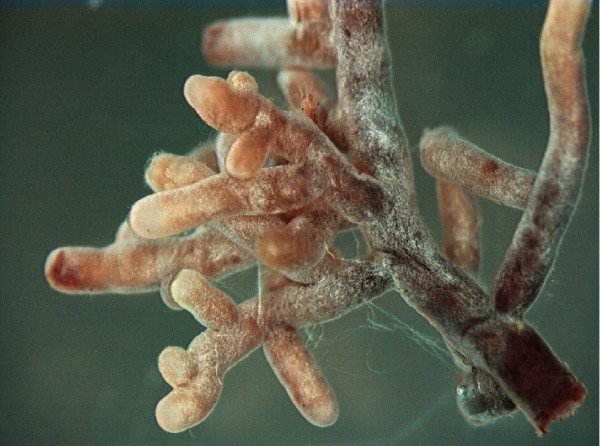Gap
According to new research at the University of Leeds, fungi bridged a hugely important gap between plants and the soil. When the earth formed 4.6 billion years ago, it had almost no atmosphere. While the planet cooled, an atmosphere developed that consisted of hydrogen sulfide, methane and carbon dioxide. As it cooled further, eventually liquid water appeared, which served as a breeding ground for cyanobacteria. Through photosynthesis, those bacteria began pumping more and more oxygen into the atmosphere. But it was only with the evolution of terrestrial plants, about 400 to 500 million years ago, that the atmosphere became rich enough in oxygen to allow aerobic life.
Phosphorus
According to the British researchers, these early plants were too primitive to have been able to colonise the land by themselves. They didn't have the roots or vascular systems that you see in plants today. They also had no access to phosphorus, a mineral essential for photosynthesis. It now turns out that they were helped by fungi, which transported the phosphorus from the soil to the plants. This is comparable to the symbiotic relationship that 99% of plants nowadays have with so-called mycorrhiza fungi.
Oldest fossil
The results of the research connect well with the discovery of one of the oldest fossils ever found of a land-based organism, which is also a fungus. Fungi are probably much older than plants. They may have developed earlier because they are able to obtain minerals from rocks, while plants are more dependent on organic material. And in the early life of our planet, there wasn't much of that available.
Models
The team used a combination of computer modelling and experiments in the laboratory using ancient fungi species that still survive today. Different fungi appeared to perform the phosphorus-carbon exchange with their plant partner at different speeds, which in turn affected the rate of oxygen production of these plants. These details were entered into a computer model in order to simulate the climate during the Palaeozoic age. This demonstrated that the extreme change in the atmosphere could only have been brought about by this plant-fungus symbiosis.
Source: Mills et al., 2018 - Nutrient acquisition by symbiotic fungi governs Palaeozoic climate transition

